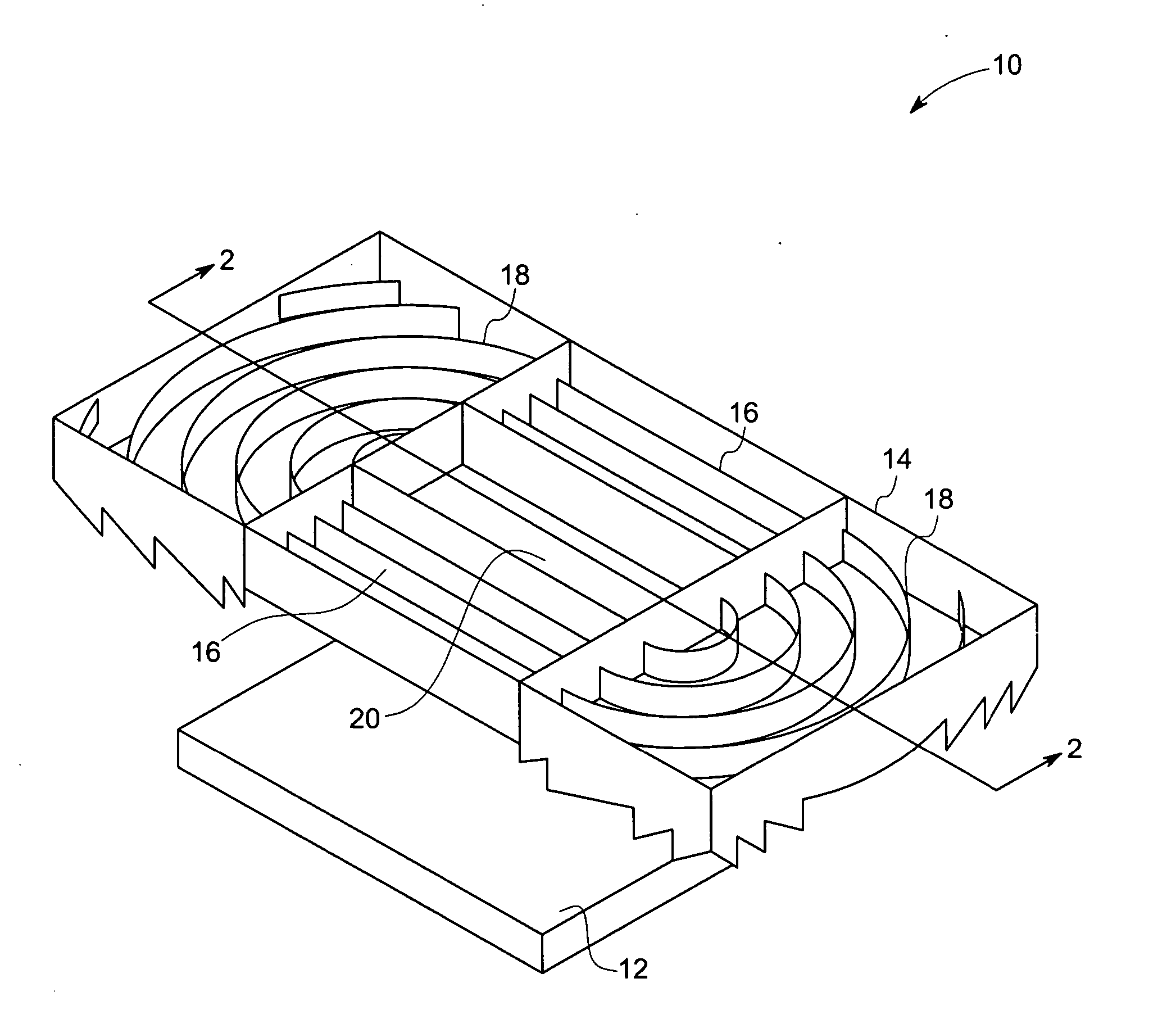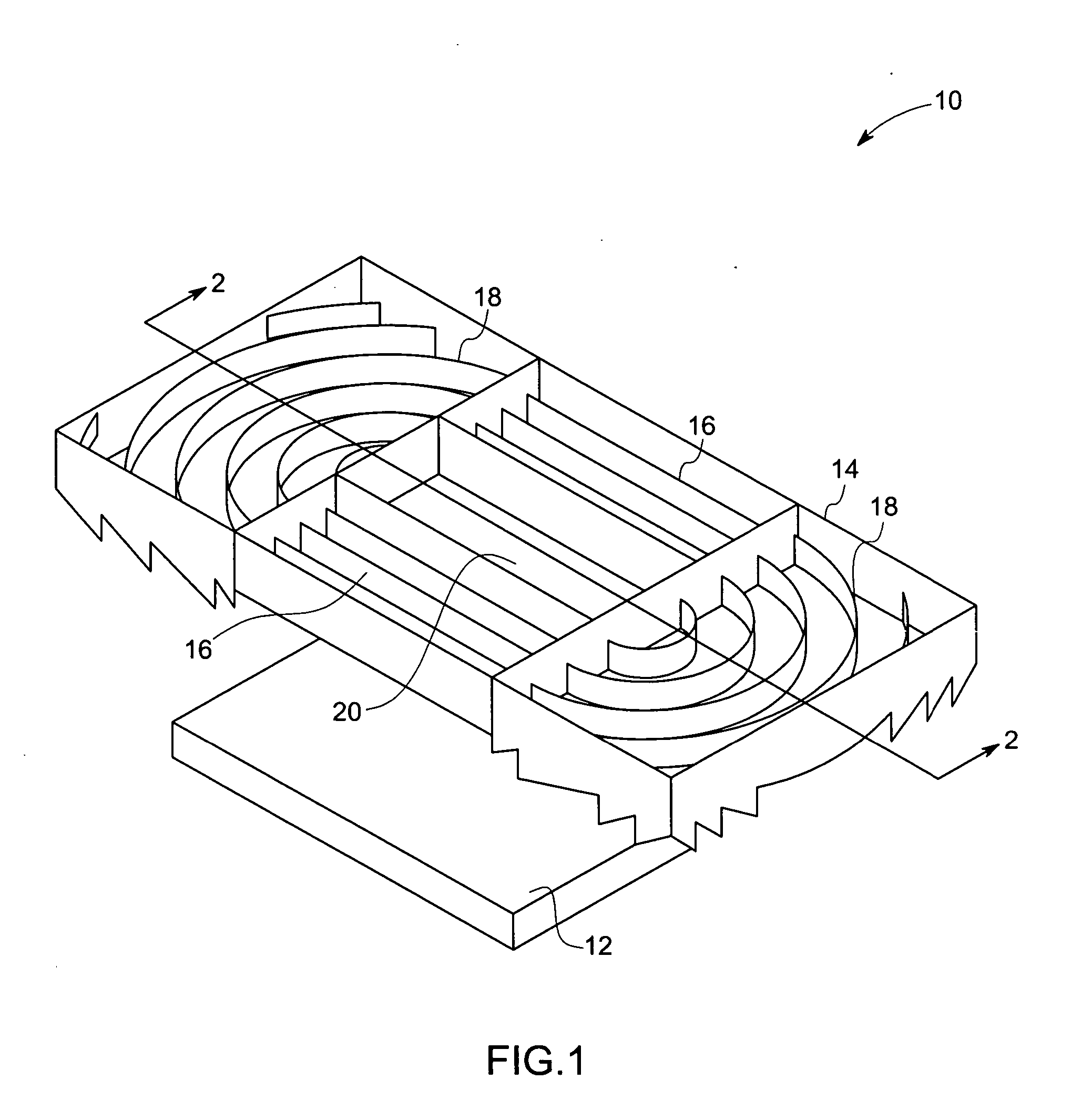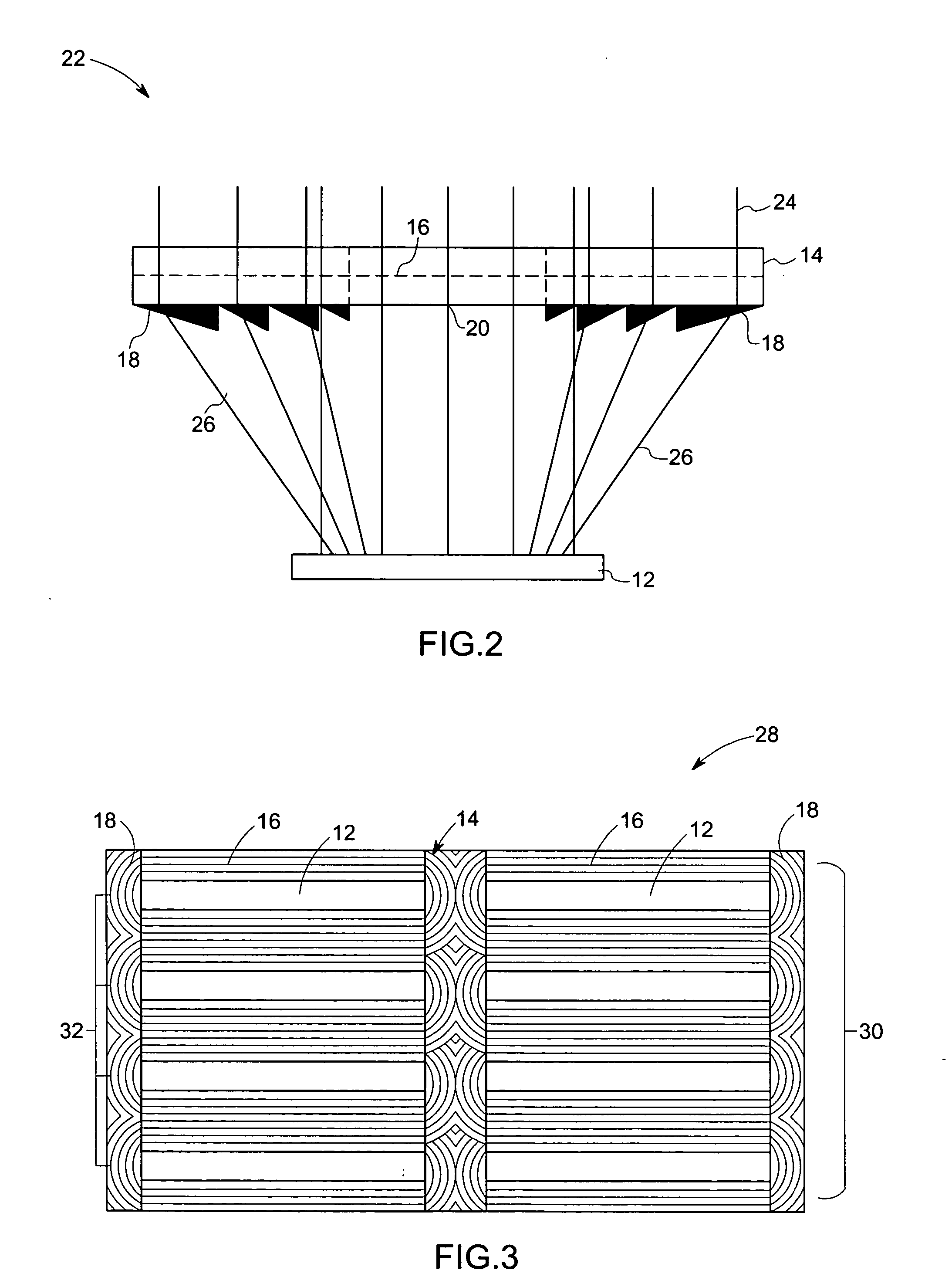Photovoltaic modules for solar concentrator
a photovoltaic module and concentrator technology, applied in the field of solar energy conversion systems, can solve the problems of crystalline silicon, a relatively expensive material, and a relatively high cost of solar cells
- Summary
- Abstract
- Description
- Claims
- Application Information
AI Technical Summary
Problems solved by technology
Method used
Image
Examples
Embodiment Construction
[0014] The present technique discloses an energy conversion system adapted to receive solar energy and convert the solar energy into electrical energy. In the description of the figures below, like features are designated with like reference numerals in each figure where possible.
[0015] Turning now to the drawings, FIG. 1 illustrates a diagrammatic representation of an energy conversion system 10. Each component of the system is described in detail below.
[0016] The energy conversion system 10 comprises a solar cell 12 configured to receive sunlight and convert solar energy of the sunlight into electrical energy. Also included is a solar concentrator 14 designed to receive solar energy and direct the solar energy to the solar cell 12. The solar concentrator 14 comprises a lens comprising at least one line focus section 16 having an off-axis configuration, at least one spherical section 18 having an off-axis configuration adjacent to the at least one line focus section, and an unpat...
PUM
 Login to View More
Login to View More Abstract
Description
Claims
Application Information
 Login to View More
Login to View More - R&D
- Intellectual Property
- Life Sciences
- Materials
- Tech Scout
- Unparalleled Data Quality
- Higher Quality Content
- 60% Fewer Hallucinations
Browse by: Latest US Patents, China's latest patents, Technical Efficacy Thesaurus, Application Domain, Technology Topic, Popular Technical Reports.
© 2025 PatSnap. All rights reserved.Legal|Privacy policy|Modern Slavery Act Transparency Statement|Sitemap|About US| Contact US: help@patsnap.com



